Search the Blog
Categories
- Books & Reading
- Broadband Buzz
- Census
- Education & Training
- General
- Grants
- Information Resources
- Library Management
- Nebraska Center for the Book
- Nebraska Libraries on the Web
- Nebraska Memories
- Now hiring @ your library
- Preservation
- Pretty Sweet Tech
- Programming
- Public Library Boards of Trustees
- Public Relations
- Talking Book & Braille Service (TBBS)
- Technology
- Uncategorized
- What's Up Doc / Govdocs
- Youth Services
Archives
Subscribe
Category Archives: What’s Up Doc / Govdocs
Free Webinar : Health Information Resources for Seniors
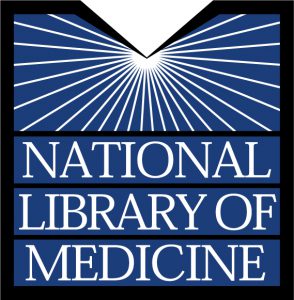 Health Information Resources for Seniors
Health Information Resources for Seniors
July 27, 2016 1pm Mountain/ 2pm Central
https://webmeeting.nih.gov/mcr2
Presenter: Annette Parde-Maass, Education Coordinator, National Network of Libraries of Medicine, MidContinental Region
As America’s 65-and-over population potentially doubles in the next 35-years, knowing where to find reliable information about senior health will be crucial. This webinar will demonstrate senior health resources from the National Library of Medicine and other centers that address needs at various ages and levels of health. Participants will learn about the sites, how to navigate them, and ways to promote and teach them to senior populations and caregivers.
For more information, visit https://nnlm.gov/mcr/education/discover. Registration is not required. We offer 1 Medical Library Association Continuing Education credit per session (details are provided at the end of each session).
Christian Minter, christian.minter@unmc.edu
Annette Parde-Maass, AnnetteParde-Maass@creighton.edu
Education and Outreach Coordinators
National Network of Libraries of Medicine
Check out the Bringing Health Information to the Community (BHIC) Blog, http://nnlm.gov/bhic/
New State Agency Publications Received at the Library Commission
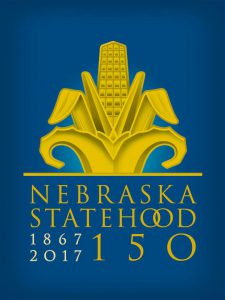 New state agency publications have been received at the Nebraska Library Commission for June 2016. Included are titles from the Nebraska Auditor of Public Accounts, Nebraska Public Power District, The Nebraska State Board of Health, and the Nebraska Department of Veteran’s Affairs, to name a few.
New state agency publications have been received at the Nebraska Library Commission for June 2016. Included are titles from the Nebraska Auditor of Public Accounts, Nebraska Public Power District, The Nebraska State Board of Health, and the Nebraska Department of Veteran’s Affairs, to name a few.
Doc Spot : Firearm Laws in Nebraska–A Legislative Research Office Backgrounder
Firearm Laws in Nebraska–A Legislative Research Office Backgrounder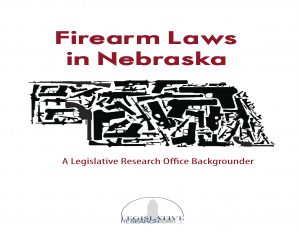 provides an overview of laws governing firearms in Nebraska. It also describes federal firearm laws to the extent they constitute a framework for state law.
provides an overview of laws governing firearms in Nebraska. It also describes federal firearm laws to the extent they constitute a framework for state law.
Firearms are governed by myriad laws at the state and federal level. For purposes of this Backgrounder, we focus on laws pertaining to buying handguns, carrying concealed handguns, criminal history background checks, and the role of federally licensed firearms dealers. We also provide a reference guide to Nebraska’s other firearms laws, a chronology of significant federal law, and supplemental firearms information in a “Q and A” format.
This Backgrounder is not intended to take a position on the ownership, possession, sale, or use of firearms—issues many find polarizing—nor to offer legal advice. In writing this report, we have endeavored to be neutral on firearms while providing information during a time when the debate over firearms has intensified.
As evidence, at least 20 proposals pertaining to firearms were pending before the Legislature in 2016. (A list of the proposals can be found in Appendix B.) We hope senators and the public, in debating firearm issues, will find the information contained in this report to be a useful, introductory guide to Nebraska’s firearm laws.
The content of this report relies on state and federal laws and supplemental material produced by the FBI and the Bureau of Alcohol, Tobacco, Firearms, and Explosives (ATF).
In addition, several individuals aided our understanding of the nuances of firearm laws. In particular, we would like to thank Nebraska State Patrol Captain Mike Jahnke and Jeff Avey, records analysis supervisor, criminal identification division of the patrol.
If you have further questions about firearms, or any area of legislative interest,
please contact the Legislative Research Office, 402-471-2221.
(Reprinted from Firearm Laws in Nebraska–A Legislative Research Office Backgrounder (Introduction)).
This publication can be printed out by clicking the picture or title link above.
New Government Publications Received at the Library Commission
 New state government publications have been received at the Nebraska Library Commission for May 2016. Included are reports from the Nebraska Accountability and Disclosure Commission, the Nebraska Criminal Justice Partners, the Nebraska State Electrical Division, Mid-America Transportation Center, and the University of Nebraska Press, to name a few.
New state government publications have been received at the Nebraska Library Commission for May 2016. Included are reports from the Nebraska Accountability and Disclosure Commission, the Nebraska Criminal Justice Partners, the Nebraska State Electrical Division, Mid-America Transportation Center, and the University of Nebraska Press, to name a few.
Free to Depositories : Updated SuDoc Classification Chart Poster
Many Federal depository libraries display the handy, “How to Locate a U.S. Government Publication” poster near their FDLP collection. It guides patrons in navigating U.S. Government resources that are arranged by Superintendent of Documents classification number.
This poster has been updated and is now available for free ordering by Federal depository libraries. Please discard any old versions of this poster, as they now contain outdated information.
The new posters are 11 X 17 and are made of durable paperboard. Please login to FDLP.gov, and order your library’s posters today (limit 5 posters per depository).
Free Webinar : Consumer Financial Protection Bureau — Your Money, Your Goals
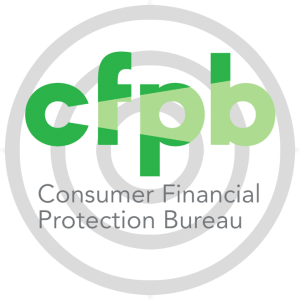 A live training webinar, “CFPB: Your Money, Your Goals,” will be presented on Wednesday, June 15, 2016.
A live training webinar, “CFPB: Your Money, Your Goals,” will be presented on Wednesday, June 15, 2016.
Register today for “CFPB: Your Money, Your Goals”
The webinar is free, however registration is required. Upon registering, a confirmation email will be sent to you. This registration confirmation email includes the instructions for joining the webinar.
Registration confirmations will be sent from sqldba@icohere.com. To ensure delivery of registration confirmations, registrants should configure junk mail or spam filter(s) to permit messages from that email address. If you do not receive the confirmation, please notify GPO.
- Date: June 15, 2016
- Start time: 2:00 p.m. (Eastern)
- Duration: 60 minutes
- Speaker: Patty Avery, Financial Empowerment Specialist, Office of Financial Empowerment, Consumer Financial Protection Bureau (CFPB)
- Description: Learn about “Your Money, Your Goals,” a toolkit to help front line staff and volunteers to help people set goals, choose financial products, and build skills in managing money, credit, and debt. “Your Money, Your Goals” is designed to address different settings in which people or organizations work with consumers.
- Expected level of knowledge for participants: No prerequisite knowledge required
Closed captioning will be available for this webinar.
GPO’s eLearning platform presents webinars using WebEx. In order to attend or present at a GPO-hosted webinar, a WebEx plug-in must be installed in your internet browser(s). Download instructions.
Visit FDLP Academy for access to FDLP educational and training resources. All are encouraged to share and re-post information about this free training opportunity.
IdentityTheft.gov : Recovering from identity theft is easier with a plan…
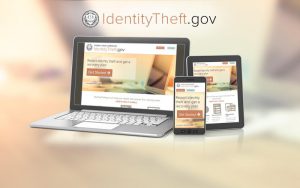 Where do identity theft victims turn for help? For many, it’s the same place they turn whenever they’re stumped — their local library. They know a librarian will find the right resource to help them recover from a crime that affects millions of people every year. IdentityTheft.gov is that resource, a free government site to report identity theft to the Federal Trade Commission, build a step-by-step personalized recovery plan, and put that plan into action.
Where do identity theft victims turn for help? For many, it’s the same place they turn whenever they’re stumped — their local library. They know a librarian will find the right resource to help them recover from a crime that affects millions of people every year. IdentityTheft.gov is that resource, a free government site to report identity theft to the Federal Trade Commission, build a step-by-step personalized recovery plan, and put that plan into action.
How it works:
Go to IdentityTheft.gov and answer some questions about what happened. The site will:
- Build your customized recovery plan
- Walk you through each recovery step
- Track your progress and adapt to your changing situation
- Pre-fill letters and forms that you can use to deal with businesses, debt collectors, and even the IRS.
How libraries can use IdentityTheft.gov:
- Use it to give your patrons advice. If your library has a secure network, help them report the theft and and open an account. If not, give them an IdentityTheft.gov fact sheet and suggest they visit the site from a secure network or using their mobile phone’s cellular data.
- Order free bookmarks and factsheets! Visit FTC.gov Bulkorder and order as many bookmarks and fact sheets as you need for FREE.
- Visit FTC.gov/libraries. Get more consumer tips and tools; they’re free and in the public domain. You can use the content in your library’s newsletters, share them online, and even put your library’s logo and branding on them.
Please use these materials to empower yourself and your community to fight back against identity theft!
History of Armed Forces Day
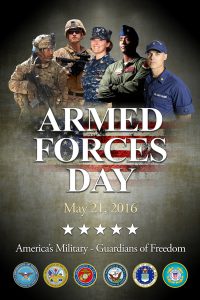 This past Saturday, May 21st was Armed Forces Day. In the United States, Armed Forces Day is celebrated on the third Saturday in May. It falls near the end of Armed Forces Week, which begins on the second Saturday of May and ends on the third Sunday of May (the fourth if the month begins on a Sunday, as in 2016).
This past Saturday, May 21st was Armed Forces Day. In the United States, Armed Forces Day is celebrated on the third Saturday in May. It falls near the end of Armed Forces Week, which begins on the second Saturday of May and ends on the third Sunday of May (the fourth if the month begins on a Sunday, as in 2016).
President Harry S. Truman led the effort to establish a single holiday for citizens to come together and thank our military members for their patriotic service in support of our country. First observed on 20 May 1950, the day was created on 31 August 1949 by Secretary of Defense Louis Johnson, to honor Americans serving in the five U.S. military branches – the U.S. Army, U.S. Navy, U.S. Marine Corps, U.S. Air Force and U.S. Coast Guard – following the consolidation of the military services in the U.S. Department of Defense. It was intended to replace the separate Army, Navy, Air Force, Marine Corps and Coast Guard Days, but the separate days are still observed, especially within the respective services.
The first Armed Forces Day was celebrated by parades, open houses, receptions and air shows. The United States’ longest continuously running Armed Forces Day Parade is held in Chattanooga, Tennessee. In 2016, Chattanooga celebrated the 67th year of the Armed Forces Day Parade, which also began in 1950.
School librarian’s workshop: federal government resources for K-12
 A live training webinar, “School Librarian’s Workshop: Federal Government Resources for K-12 / Taller para maestros de español: Recursos de gobierno federal para niveles K-12,” will be presented on Tuesday, May 31, 2016.
A live training webinar, “School Librarian’s Workshop: Federal Government Resources for K-12 / Taller para maestros de español: Recursos de gobierno federal para niveles K-12,” will be presented on Tuesday, May 31, 2016.
Click here to register!
- Start time: 2:00 p.m. (Eastern), 1:00 (Central)
- Duration: 60 minutes
- Speaker: Jane Canfield, Coordinator of Federal Documents, Pontifical Catholic University of Puerto Rico
- Learning outcomes: Are you a school librarian? Do you work with school librarians or children? The School Librarian’s Workshop will provide useful information for grades K-12, including Ben’s Guide to the U.S. Government and Kids.gov. The webinar will explore specific agency sites which provide information, in English and Spanish, appropriate for elementary and secondary school students. Teachers and school librarians will discover information on Federal laws and regulations and learn about resources for best practices in the classroom.
- Expected level of knowledge for participants: No prerequisite knowledge required.
Closed captioning will be available for this webinar.
The webinar is free, however registration is required. Upon registering, a confirmation email will be sent to you. This registration confirmation email includes the instructions for joining the webinar.
Registration confirmations will be sent from sqldba[at]icohere.com. To ensure delivery of registration confirmations, registrants should configure junk mail or spam filter(s) to permit messages from that email address. If you do not receive the confirmation, please notify GPO.
GPO’s eLearning platform presents webinars using WebEx. In order to attend or present at a GPO-hosted webinar, a WebEx plug-in must be installed in your internet browser(s). Download instructions.
Visit FDLP Academy for access to FDLP educational and training resources. All are encouraged to share and re-post information about this free training opportunity.
Webinar — Increasing Veterans’ Access with eBenefits
 A live training webinar, “Increasing Veterans’ Access with eBenefits,” will be presented on Thursday, June 16, 2016.
A live training webinar, “Increasing Veterans’ Access with eBenefits,” will be presented on Thursday, June 16, 2016.
Register today for “Increasing Veterans’ Access with eBenefits”
- Date: Thursday, June 16, 2016
- Start time: 2:00 p.m. (Eastern), 1:00 (Central)
- Duration: 60 minutes
- Speaker: Zorina Pritchett, Department of Veterans Affairs (VA)
- Description: Would you like to do more to help veterans? Learn the basics of the Department of Veterans Affairs’ eBenefits web portal, which allows veterans, service members, and eligible dependents to directly access VA benefits and services. Understanding eBenefits will allow you to assist eligible users in accessing the portal so they can effectively manage their VA benefits and military information. This webinar will present an overview of the eBenefits registration, basic navigation, reference contacts, and key resources.
- Expected level of knowledge for participants: No prerequisite knowledge required
Closed captioning will be provided for this webinar.
The webinar is free, however registration is required. Upon registering, a confirmation email will be sent to you. This registration confirmation email includes the instructions for joining the webinar.
Registration confirmations will be sent from sqldba @ icohere.com. To ensure delivery of registration confirmations, registrants should configure junk mail or spam filter(s) to permit messages from that email address. If you do not receive the confirmation, please notify GPO.
GPO’s eLearning platform presents webinars using WebEx. In order to attend or present at a GPO-hosted webinar, a WebEx plug-in must be installed in your internet browser(s). Download instructions.
Visit FDLP Academy for access to FDLP educational and training resources. All are encouraged to share and re-post information about this free training opportunity with others.
Webinar — The Outreach Bridge to Engaging Latino and Spanish-speaking Families
 This webinar presents strategies for library outreach to and engagement with Latino and Spanish-speaking communities, laying the groundwork for successful programming.
This webinar presents strategies for library outreach to and engagement with Latino and Spanish-speaking communities, laying the groundwork for successful programming.
If you want to attract Latino and Spanish-speaking families to your library, the instinct is to launch a bilingual or Spanish-language storytime. It’s the “if we build it, they will come” logic for attracting community members who are not being served by the library. Libraries may be disappointed to discover that it doesn’t necessarily work that way. In this webinar, recognize the critical role that outreach plays in bridging the gap between Latino and Spanish-speaking families and library services. Hear real-world examples of outreach strategies from librarians who successfully connected with their Latino and Spanish-speaking communities, and learn a basic outreach process that you can adapt for your own community.
Presented by: Katie Scherrer, Connected Communities, consultant and co-author of Once Upon a Cuento: Bilingual Storytime in English and Spanish; and Lauren Simon, Community Librarian, Tualatin Public Library
Related Resources:
- On WebJunction:
Helping Schools Ensure the Civil Rights of Transgender Students… U.S. Department of Education: Examples of Policies and Emerging Practices for Supporting Transgender Students
 The U.S. Department of Education is committed to providing schools with the information they need to provide a safe, supportive, and nondiscriminatory learning environment for all students. It has come to the Department’s attention that many transgender students (i.e., students whose gender identity is different from the sex they were assigned at birth) report feeling unsafe and experiencing verbal and physical harassment or assault in school, and that these students may perform worse academically when they are harassed. School administrators, educators, students, and parents are asking questions about how to support transgender students and have requested clarity from the Department of Education. In response, ED has developed Examples of Policies and Emerging Practices for Supporting Transgender Students.
The U.S. Department of Education is committed to providing schools with the information they need to provide a safe, supportive, and nondiscriminatory learning environment for all students. It has come to the Department’s attention that many transgender students (i.e., students whose gender identity is different from the sex they were assigned at birth) report feeling unsafe and experiencing verbal and physical harassment or assault in school, and that these students may perform worse academically when they are harassed. School administrators, educators, students, and parents are asking questions about how to support transgender students and have requested clarity from the Department of Education. In response, ED has developed Examples of Policies and Emerging Practices for Supporting Transgender Students.To see, and/or print this 25 page report, click on the title above.
Activate, Collaborate, and Educate: Health Outreach and Programming in Your Community
 June 2, 2016 – 10-11 AM Central / 9-10 AM Mountain Time (online)
June 2, 2016 – 10-11 AM Central / 9-10 AM Mountain Time (online)
National Network of Libraries of Medicine MidContinental Region
Presenter: Community Engagement Coordinator, Dana Abbey.
Description: This presentation will provide an overview of ideas to conduct health outreach and create health programs for libraries and community/faith based organizations. Participants will learn how to integrate resources from the National Library of Medicine (NLM) and other reputable agencies to introduce community members to NLM resources in fun and engaging ways. Examples of programs for children, teens, adults and/or seniors using NLM and other National Institutes of Health center and office resources will be shared. The examples in this session will focus on a nutrition and food label program for families to align with the summer reading 2016 theme.
This class has been approved for 1 hour of continuing education credits by the Medical Library Association and is eligible for MLA Level 1 and Level 2 Consumer Health Information Specialization (CHIS).
Registration required. Visit http://nnlm.gov/mcr/training-schedule for registration link and more information.
Annette Parde-Maass
Health Information Literacy Coordinator
National Network of Libraries of Medicine
Creighton University|Health Sciences Library
AnnetteParde-Maass@creighton.edu
402.280.4156
Genealogy Essentials: Helping Patrons Search for Family Roots
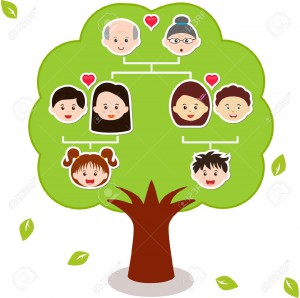 Curiosity about where one comes from is innate to the human spirit. Did my grandmother adorn graves with marigolds for Día de los Muertos too? Mom, why do we fast for Ramadan? Did my great-great-grandfather really elope from Ontario to Wisconsin? Where do my people come from? Who am I?
Curiosity about where one comes from is innate to the human spirit. Did my grandmother adorn graves with marigolds for Día de los Muertos too? Mom, why do we fast for Ramadan? Did my great-great-grandfather really elope from Ontario to Wisconsin? Where do my people come from? Who am I?
Our personal histories are often a mix of heritage, culture, ethnicity and religion. One way to connect with our roots is through genealogy research. So many internet-based tools exist to help our patrons explore their histories, but as library staff we can help guide patrons to connect successfully with the details and stories of their ancestry.
On May 19, WebJunction will hold the free webinar Genealogy Essentials: Helping Patrons Search for Family Roots to show you how to assist patrons with genealogical questions using FamilySearch.org, a leading genealogy resource.
Most communities encompass many different cultures and heritages. This presents opportunities for libraries, and if you’re looking for ways to expand how you bring together the different facets of your community, check out the archived webinar Community Engagement: Serving Diverse Communities Where They Are.
Knowing that Latino and Spanish-speaking communities are growing around the country, we’re curious in our May Crossroads poll specifically if and how you are reaching these communities at your library. Let us know!
Date : 19 May 2016
Time: 3:00 PM – 4:00 PM (Eastern Daylight Time)
Future Historical Collections : Archiving the 2014 Ebola Outbreak
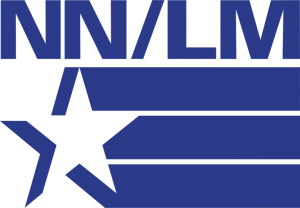 In October 2014, Marty Magee shared some informative resources about Ebola with the NCompass Blog community. That month the National Library of Medicine (NLM) began capturing and preserving born-digital content about the Ebola outbreak as they anticipated its use as primary source material for future research. The subsequent Ebola Outbreak 2014 online collection provided opportunities to compare web pages and dates. For instance, the USAID Ebola web page could be compared to one from the CDC or it could be compared to itself. What was the USAID Ebola page like on October 22, 2014 versus January 20, 2016? Or how did tweets containing #ebola from October 4, 2014 compare to those from June 20, 2015? You can see for yourself by visiting https://archive-it.org/collections/4887?fc=websiteGroup%3AEbola+Outbreak+2014 .
In October 2014, Marty Magee shared some informative resources about Ebola with the NCompass Blog community. That month the National Library of Medicine (NLM) began capturing and preserving born-digital content about the Ebola outbreak as they anticipated its use as primary source material for future research. The subsequent Ebola Outbreak 2014 online collection provided opportunities to compare web pages and dates. For instance, the USAID Ebola web page could be compared to one from the CDC or it could be compared to itself. What was the USAID Ebola page like on October 22, 2014 versus January 20, 2016? Or how did tweets containing #ebola from October 4, 2014 compare to those from June 20, 2015? You can see for yourself by visiting https://archive-it.org/collections/4887?fc=websiteGroup%3AEbola+Outbreak+2014 .
For more information about the development of the Ebola Outbreak 2014 digital collection and archiving born-digital content, check out these blog posts and lecture recordings from Christie Moffatt, Archivist & Manager of the Digital Manuscripts Program in the History of Medicine Division of the NLM:
Christie Moffatt described the reasoning and beginnings of the collection on an NLM Circulating Now post, November 19, 2014: https://circulatingnow.nlm.nih.gov/2014/11/19/future-historical-collections-archiving-the-2014-ebola-outbreak/
History of Medicine Lecture by Christie Moffatt about the development of the Ebola Web Archive, March 10, 2016: http://videocast.nih.gov/launch.asp?19543
NLM Circulating Now blog interview with Christie Moffatt about herself and her work, March 10, 2016: https://circulatingnow.nlm.nih.gov/2016/03/10/future-historical-collections-archiving-the-2014-ebola-outbreak-2/
(via Annette Parde-Maass)
A little note on the National Network of Libraries of Medicine (NN/LM) coordinators in Nebraska:
Since October 2014, Marty moved to another position at UNMC, Christian Minter was hired in Marty’s former position NN/LM, and Annette Parde-Maass was hired as Creighton University’s NN/LM Coordinator (formerly the position held by Monica Rogers).
Air Bag Inflator Recall Expanded by U.S. D.O.T
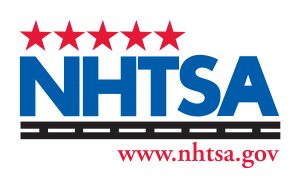 WASHINGTON, May 4, 2016 — The United States Department of Transportation’s National Highway Traffic Safety Administration is expanding and accelerating the recall of Takata air bag inflators. The decision follows the agency’s confirmation of the root cause behind the inflators’ propensity to rupture. Ruptures of the Takata inflators have been tied to ten deaths and more than 100 injuries in the United States.
WASHINGTON, May 4, 2016 — The United States Department of Transportation’s National Highway Traffic Safety Administration is expanding and accelerating the recall of Takata air bag inflators. The decision follows the agency’s confirmation of the root cause behind the inflators’ propensity to rupture. Ruptures of the Takata inflators have been tied to ten deaths and more than 100 injuries in the United States.
Under the Amended Consent Order issued to Takata this week, the company is required to make a series of safety defect decisions that will support vehicle manufacturer recall campaigns of an additional estimated 35-40 million inflators, adding to the already 28.8 million inflators previously recalled. These expansions are planned to take place in phases between May 2016 and December 2019. The expansions mean that all Takata ammonium nitrate-based propellant driver and passenger frontal air bag inflators without a chemical drying agent, also known as a desiccant, will be recalled.
“Today’s action is a significant step in the U.S. Department of Transportation’s aggressive oversight of Takata on behalf of drivers and passengers across America,” said Transportation Secretary Anthony Foxx. “The acceleration of this recall is based on scientific evidence and will protect all Americans from air bag inflators that may become unsafe.”
The five recall phases are based on prioritization of risk, determined by the age of the inflators and exposure to high humidity and fluctuating high temperatures that accelerate the degradation of the chemical propellant.
“NHTSA’s aggressive actions in 2015 means this recall is already a year ahead of where it would have been if the agency had waited for this research,” said NHTSA Administrator Mark Rosekind. “As a result, all of the most dangerous inflators responsible for the deaths and injuries are already under recall.”
NHTSA and its independent expert reviewed the findings of three independent investigations into the Takata air bag ruptures and confirmed the findings on the root cause of inflator ruptures. A combination of time, environmental moisture and fluctuating high temperatures contribute to the degradation of the ammonium nitrate propellant in the inflators. Such degradation can cause the propellant to burn too quickly, rupturing the inflator module and sending shrapnel through the air bag and into the vehicle occupants.
“The science clearly shows that these inflators become unsafe over time, faster when exposed to humidity and variations of temperature,” Rosekind added. “This recall schedule ensures the inflators will be recalled and replaced before they become dangerous, giving vehicle owners sufficient time to have them replaced before they pose a danger to vehicle occupants. NHTSA will continue to evaluate all available research and will act quickly to protect safety.”
NHTSA will also consult with affected vehicle manufacturers before revising the Coordinated Remedy Order that governs the accelerated program to obtain and install replacement inflators. The Coordinated Remedy Program will continue to ensure that replacement inflators will be made available to highest-risk vehicles first. The revised Coordinated Remedy Program, to be announced this summer, will detail the updated vehicle prioritization schedule and the schedule by which manufacturers are required to procure sufficient supply of replacement parts to conduct the required recall repairs.
This is the largest and most complex safety recall in U.S. history. Under the Coordinated Remedy Program, NHTSA and manufacturers have committed to seek a 100 percent recall completion rate.
“Everyone plays a role in making sure that this recall is completed quickly and safely, including manufacturers, suppliers and vehicle owners themselves,” Rosekind said. “People who receive notification that there is a remedy available for their vehicle should act immediately to have their inflator fixed. All vehicle owners should regularly check SaferCar.gov for information about any open safety recall on their vehicle and what they can do to have it fixed free of charge.”
The recall expansion does not include inflators that include a chemical desiccant that absorbs moisture. There have been no reported ruptures of the desiccated inflators due to propellant degradation. Under the Amended Consent Order, Takata is required to redirect its research toward the safety of the desiccated inflators. Absent proof that the desiccated inflators are safe, Takata will be required to recall them under the November 2015 Consent Order.
In 2015, NHTSA imposed the largest civil penalty in its history for Takata’s violations of the Motor Vehicle Safety Act, and for the first time used its authority to accelerate recall repairs to millions of affected vehicles. NHTSA also appointed an Independent Monitor to assess, track and report the company’s compliance with the Consent Order and to oversee the Coordinated Remedy Program.
Consumers can find complete information about the Takata air bag inflator recall here.
- May 2016 amendment to Takata consent order
- NHTSA expert report on the root cause of Takata inflator ruptures
- Fact Sheet: May 2016 Takata Recall Expansion
- Fact Sheet: NHTSA Actions to Accelerate the Takata Remedy
- Fact Sheet: Takata Recall History and Key Terms
Stay connected with NHTSA: Search for open recalls with VIN look up | Download the Safercar Mobile App for Apple or Android devices | Receive recall alerts by email | Visit us on Facebook.com/NHTSA | Follow us on Twitter.com/NHTSAgov | Watch 5-Star Safety Ratings crash tests on YouTube.com/USDOTNHTSA | SaferCar.gov
Reprinted from NHTSA (National Highway Traffic Safety Administration).
New Nebraska State Agency Publications
New Nebraska State Agency publications have been received at the Nebraska Library Commission for April 2016. Included are Annual and Audit reports, reports from the Nebraska Arts Council, the Department of Education, the Department of Environmental Quality, the Nebraska Foster Care Review Office, and new titles from the University of Nebraska Press, to name a few.
have been received at the Nebraska Library Commission for April 2016. Included are Annual and Audit reports, reports from the Nebraska Arts Council, the Department of Education, the Department of Environmental Quality, the Nebraska Foster Care Review Office, and new titles from the University of Nebraska Press, to name a few.
Posted in What's Up Doc / Govdocs
Leave a comment
Download 67,000 Historic Maps
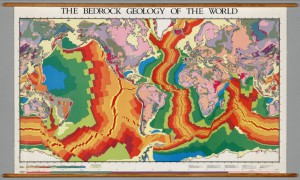 If you love looking at maps as much as I do, you and your patrons will really enjoy the website I’m sharing with you today. Please read on…
If you love looking at maps as much as I do, you and your patrons will really enjoy the website I’m sharing with you today. Please read on…
Stanford University is excited to announce the arrival of the David Rumsey Map Center in April. While these kinds of university improvements are rarely of much interest to the general public, this one highlights a collection worth giving full attention. Well, for those of us, that is, who love maps.
You do not need to be a Stanford student or faculty or staff member to access the vast treasures of the Rumsey Map collection, nor do you need to visit the university or its new Center. Since 1996, the Rumsey collection’s online database has been open to all, currently offering anyone with an internet connection access to 67,000 maps from all over the globe, spanning five centuries of cartography. Rumsey’s holdings constitute, writes Wired, “the dopest map collection on Earth,” and though its physical housing at Stanford is a huge boon to academic researchers, its online archive is yours for the browsing, searching, and downloading, whoever and wherever you are.
Pages like the 1867 map “Twelve Perspectives on the Earth in Orbit and Rotation,” contains detailed publication information, the ability to zoom in and examine the tiniest details, and an “export” function allowing users to download a variety of resolutions up to 12288 pixels. (The same holds true for all other maps.) There’s also a new feature for many maps called “Georeferencing” (see a short introductory video here), which matches the map’s contours with other historic maps or with more accurate, modern satellite images.
In the case of “Twelve Perspectives on the Earth in Orbit and Rotation,” the georeferencing function returns an error message stating “this is not a map.” But in terrestrial images, like the topographical map of the Yosemite Valley above, we can choose specific portions to georeference, use the “visualize” function to see how they match up to contemporary views, and conduct an accuracy analysis. (Georeferencing requires sign-in with a free account, or you can use your Google, Facebook, or Twitter log-ins.) Georeferencing is not available for all maps, yet. You can help the Rumsey collection expand the feature by visiting this page and clicking the “Random Map” link.
The Rumsey Collection contains a seemingly inexhaustible supply of cartographic images, such as the colorful aerial view of New York City from 1900, above, and the 1949 composite map of the Soviet Union, at the top of the post. In addition to the maps themselves—most works of art in their own right—the database is full of other beautiful images related to geography, such as the fabulous, full-color title page below for the 1730 Atlas Novus sive Tabulae Geographicae by Matthaeus Seutter.
David Rumsey—currently President of the digital publishing company Cartography Associates—began collecting maps and “related cartographic materials” in 1980. Since then, his physical collection has grown to include over 150,000 maps, to be housed at the Stanford Center that bears his name, and he has received several awards for making his collection available online. The cartography enthusiasts among us, and the hardcore scholars, can likely look forward to many more maps appearing in the web archive. For now, there’s no shortage of fascinating material.
On the site’s homepage, they highlight these areas worth exploring:
The historical map collection has over 67,000 maps and images online. The collection includes rare 16th through 21st century maps of America, North America, South America, Europe, Asia, Africa, Pacific, and the World.
Popular collection categories are celestial, antique atlas, globe, school geography, maritime chart, state, county, city, pocket, wall & case, children’s, and manuscript maps. Search examples: Pictorial maps, United States maps, Geology maps, California map, Afghanistan map, America map, New York City map, Chicago map, and U.S. Civil War maps. Browse map categories: What, Where, Who, When. The collection is used to study history, art, genealogy, explorations, and family history.
Enjoy!
Reprinted from Open Culture : the best free cultural & educational media on the web, April 20th, 2016.
USDA Seeks Applications for Nearly $12 Million in Broadband Grants for Rural Communities
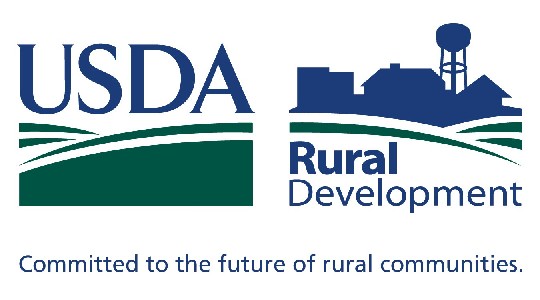
Agriculture Secretary Tom Vilsack has announced that USDA is soliciting applications for grants to establish broadband in unserved rural communities through its Community Connect program. Community Connect is administered by USDA’s Rural Utilities Service and helps to fund broadband deployment into rural communities where it is not economically viable for private sector providers to provide service.
“Through Community Connect and our other telecommunications programs, USDA helps to ensure that rural residents have access to broadband to run businesses, get the most from their education and benefit from the infinite services that fast, reliable broadband provides,” Vilsack said. “USDA is committed to supporting America’s rural communities through targeted investments in our bioeconomy and renewable energy, local and regional food systems, conservation initiatives and rural development.”
USDA plans to award up to $11.7 million in grants through the Community Connect grant program. The grants fund broadband infrastructure to help foster economic growth by delivering connectivity to the global marketplace. The grants also fund broadband for community centers and public institutions.
USDA has invested $160 million in more than 240 projects to bring broadband to unserved rural communities since the Community Connect Program was created in 2002.
In 2009, the Wichita Online telecommunications company in Cooperton, Okla., received a Community Connect grant to build a community center with computers. The center serves as an Internet library for local residents and is used by several government agencies. The sheriff’s office and volunteer fire department coordinate their public safety, fire protection and other emergency services from the center. During harvest season, many farmworkers use the computers to communicate with their family members far away. Cooperton is a farming and ranching community between the Slick Hills and Wichita Mountains in Southwest Oklahoma.
The minimum grant is $100,000 for FY 2016. The maximum award is $3 million. USDA announced new rules in 2013 to better target Community Connect grants to areas where they are needed the most. To view the rules, go to http://www.rd.usda.gov/programs-services/community-connect-grants
Prior Community Connect grants cannot be renewed. However, existing Community Connect awardees may submit applications for new projects, which USDA will evaluate as new applications
This Community Connect round builds on USDA’s historic investments in rural America over the past seven years. Since 2009, USDA has worked to strengthen and support rural communities and American agriculture, an industry that supports one in 11 American jobs, provides American consumers with more than 80 percent of the food we consume, ensures that Americans spend less of their paychecks at the grocery store than most people in other countries, and supports markets for homegrown renewable energy and materials. USDA has provided $5.6 billion of disaster relief to farmers and ranchers; expanded risk management tools with products like to Whole Farm Revenue Protection; helped farm businesses grow with $36 billion in farm credit; provided $4.32 billion in critical agricultural research; established innovative public-private conservation partnerships such as the Regional Conservation Partnership Program; developed new markets for rural-made products, including more than 2,500 biobased products through USDA’s BioPreferred program; and invested $64 billion in infrastructure, housing and community facilities to help improve quality of life in rural America.
Since 2009, USDA Rural Development (#USDARD ) has invested $11 billion to start or expand 103,000 rural businesses; helped 1.1 million rural residents buy homes; funded nearly 7,000 community facilities such as schools, public safety and health care facilities; financed 180,000 miles of electric transmission and distribution lines; and helped bring high-speed Internet access to nearly 6 million rural residents and businesses. For more information, visit www.usda.gov/results.
) has invested $11 billion to start or expand 103,000 rural businesses; helped 1.1 million rural residents buy homes; funded nearly 7,000 community facilities such as schools, public safety and health care facilities; financed 180,000 miles of electric transmission and distribution lines; and helped bring high-speed Internet access to nearly 6 million rural residents and businesses. For more information, visit www.usda.gov/results.
IRS Warns of Continued Scams as the Tax Deadline Nears
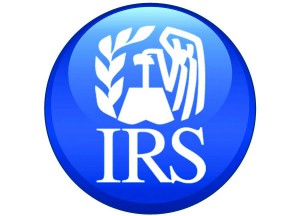 The Internal Revenue Service issued a warning yesterday that scammers may try using the April 18 tax deadline to prey on hard-working taxpayers by impersonating the IRS and others with fake phone calls and emails. Even after the tax deadline passes, taxpayers should know the telltale signs of a scam and tips to protect themselves from a variety of phone scams and phishing emails.
The Internal Revenue Service issued a warning yesterday that scammers may try using the April 18 tax deadline to prey on hard-working taxpayers by impersonating the IRS and others with fake phone calls and emails. Even after the tax deadline passes, taxpayers should know the telltale signs of a scam and tips to protect themselves from a variety of phone scams and phishing emails.
“We’ve seen continuing activity in these scams throughout the filing season,” said IRS Commissioner John Koskinen. “As the tax deadline nears, these criminals may try and trick honest taxpayers over the phone or via email, and people should remain vigilant. After the tax deadline, watch out for these scammers promising a refund or threatening you with an unexpected tax bill.”
These scam artists frequently masquerade as being from the IRS, a tax company and sometimes even a state revenue department. By email, they try enticing people to click on links on official-looking messages containing questions related to their tax refund. Report these emails to phishing@irs.gov. By phone, many scammers use threats to intimidate and bully people into paying a tax bill. They may even threaten to arrest, deport or revoke the driver’s license of their victim if they don’t get the money.
Variations of these scams can be seen nationwide, and it’s more important than ever to be cautious with providing personal or financial information. As part of the effort to protect taxpayers, the IRS has teamed up with state revenue departments and the tax industry to make sure taxpayers understand the dangers to their personal and financial data as part of the “Taxes. Security.Together” campaign. Some examples of the varied tactics seen this year are:
- Soliciting W-2 information from payroll and human resources professionals–IR-2016-34
- “Verifying” tax return information over the phone–IR-2016-40
- Pretending to be from the tax preparation industry–IR-2016-28
There are some important reminders for taxpayers nationwide about these schemes:
Watch Out for Threatening Phone Calls
Beware of scammers making unsolicited calls claiming to be IRS officials. They demand that the victim pay a bogus tax bill. They con the victim into sending cash, usually through a prepaid debit card or wire transfer. They may also leave “urgent” callback requests through phone “robo-calls,” or via a phishing email.
Scammers often alter caller ID numbers to make it look like the IRS or another agency is calling. The callers use IRS titles and fake badge numbers to appear legitimate. They may use the victim’s name, address and other personal information to make the call sound official.
The IRS Will Never:
- Call to demand immediate payment over the phone, nor will the agency call about taxes owed without first having mailed you a bill.
- Threaten to immediately bring in local police or other law-enforcement groups to have you arrested for not paying.
- Demand that you pay taxes without giving you the opportunity to question or appeal the amount they say you owe.
- Require you to use a specific payment method for your taxes, such as a prepaid debit card.
- Ask for credit or debit card numbers over the phone.
If you get a phone call from someone claiming to be from the IRS and asking for money and you don’t owe taxes, here’s what you should do:
- Do not give out any information. Hang up immediately.
- Contact TIGTA to report the call. Use their “IRS Impersonation Scam Reporting” web page or call 800-366-4484.
- Report it to the Federal Trade Commission. Use the “FTC Complaint Assistant” on FTC.gov. Please add “IRS Telephone Scam” in the notes.
- If you think you might owe taxes, call the IRS directly at 1-800-829-1040.
Avoid e-mail phishing attempts
There has been a surge in e-mail scams this year that appear to be from a tax agency or a tax software company.
Never reply to emails, texts or pop-up messages asking for your personal, tax or financial information. One common trick by criminals is to impersonate a business such as your financial institution, tax software provider or the IRS, asking you to update your account and providing a link. For small business, these schemes may try impersonating a company leader and request payroll and human resource information for employees in your company. Never click on links even if they seem to be from organizations you trust. Go directly to the organization’s website.
And if it sounds too good to be true, it probably is. If you see an email that says ‘You won a free cruise’ or ‘The IRS has a refund waiting for you,’ odds are high that it is a phishing attempt looking to get your personal information.
If you get a ‘phishing’ email, remember this important advice:
- Don’t reply to the message.
- Don’t give out your personal or financial information.
- Forward the email to phishing@irs.gov. Then delete it.
- Don’t open any attachments or click on any links. They may have malicious code that will infect your computer.
More information on how to report phishing or phone scams is available on IRS.gov.
Additional IRS Resources:
- www.irs.gov/identitytheft
- Fact Sheet 2016-1, IRS, States and Tax Industry Combat Identity Theft and Refund Fraud on Many Fronts
- Fact Sheet 2016-2, IRS, States and Tax Industry Urge Taxpayers to Join the Effort to Combat Identity Theft
- Fact Sheet 2016-3, IRS Identity Theft Victim Assistance: How It Works
- Fact Sheet 2016-4, How New Identity Security Changes May Affect Taxpayers for 2016


